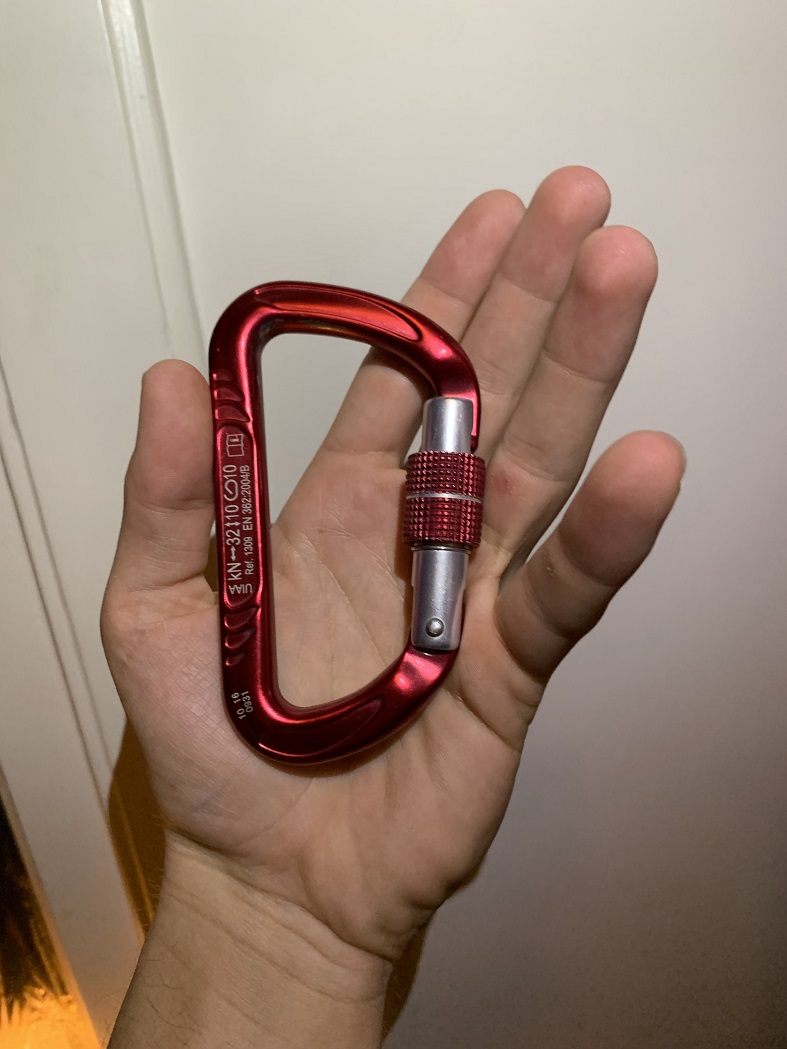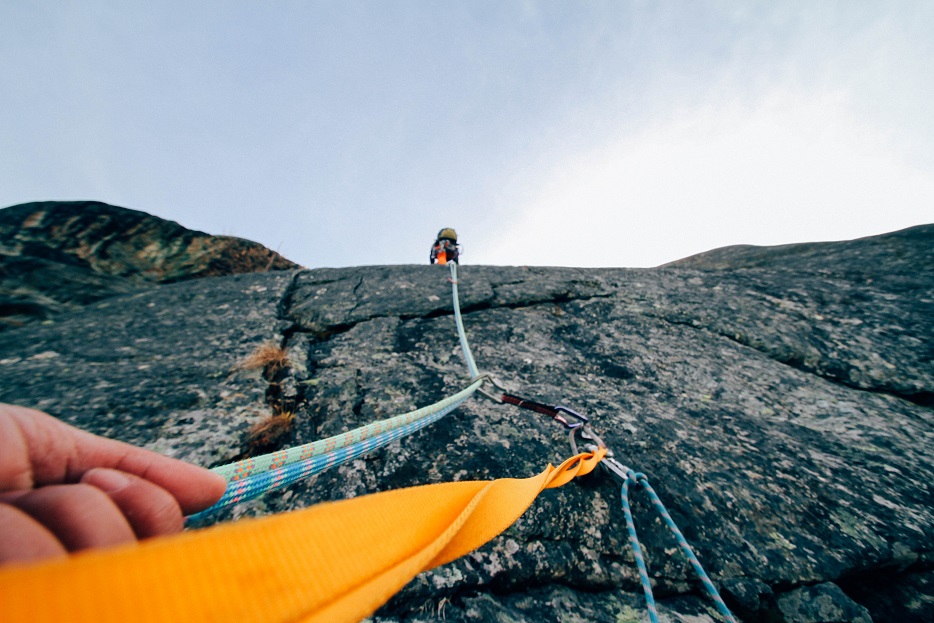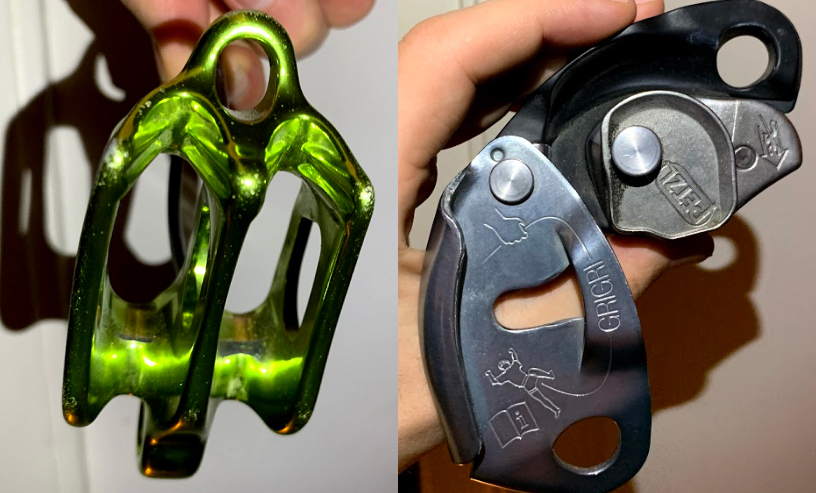Sure, you could go to the gym, but why would you want to when you could build your very own rock climbing wall in the backyard?
Here’s the deal:
You don’t have to spend tons of money every month to get that climbing practice you need.
By building your very own rock climbing wall in your yard or garden, you’ll give yourself unlimited 24/7 access to climbing.
I know what you’re thinking: building your own rock climbing wall can’t be easy. That’s why I’d like to walk you through the process step-by-step so that you can safely (and easily!) build your rock climbing wall as soon as possible. By following these methods, you’ll be able to start climbing in your own backyard in no time.
With this in mind, let’s jump right in!
1. Find a Location
I get it: you’re probably ready to rush off and get your wall built as soon as possible. So was I. But you won’t get very far if you don’t find your location first. Simply put, it’s crucial that you have a place where you can safely build your rock wall. This could be against a natural structure or anchor that’s sturdy enough to hold your wall, but most likely you’ll have to find a location to build a free-standing wall. By far the most popular type of garden rock climbing walls, these require you to build a framework and foundation by yourself.
You want to make sure that your wall isn’t too close to your house or any other structure. Instead, you want to set it back a bit so that you have a safe and dedicated spot to practice. This will keep your wall out of the way and keep you safe in case of falls. Remember that you’ll ultimately have to build a fall zone around your wall, so you’ll want to plan accordingly.
2. Design Your Wall
Here’s where the fun starts. Once you’ve chosen your location, you can begin designing your wall. Is it a free-standing wall? How big will it be? What type of routes do you want to have? You can decide all of this and more during the design stage. At this time, you’ll want to make detailed plans for your climbing wall. This will ensure that the building process goes smoothly down the road.
So get out and measure! Poke around. Improve your designs. You’ll need to design what level wall you want to build. Is it just for you or for the whole family? Keep in mind that building beginner or intermediate courses is often cheaper and easier than attempting to build something more advanced. Make a few designs and play around until you find one that you think will really work. Only when you are sure that your design is functional, safe, and fun move ahead to the next step of the process.
3. Gather Your Materials
So you’ve got your location, and you’ve made your design. All that’s left is gathering your materials and actually building your wall. While the specific tools and materials you’ll need will ultimately depend on the wall that you’re building, you’ll likely need some combination of the following tools and supplies:
- Saw (circular and reciprocating)
- Hammer
- Drill
- Ladder
- Shovel
- Post Hole Digger
- Measuring Tape
- Level
- Rope
- Plywood
- Screws, nuts, and bolts,
- Cement
- Anti skid paint
- Posts
You can find most, if not all, of these supplies at your local hardware store, meaning you won’t have to go very far to get your rock climbing wall under way.
For ultimate convenience, you could of course also have them delivered to your door by Amazon, as all of these products can be bought there as well.
I suggest you browse around there as well to get some inspiration for which climbing holds you want to choose.
Keep in mind that your wall will differ in price depending on its height, location, and other specific dimensions. While building your own rock wall may have a slight upfront cost, don’t forget that it will potentially save you tons of money by allowing you to climb at home. That being said, however, make sure to plan accordingly so that you can keep your wall within a comfortable budget.
4. Make Your Outline
Once you’ve gathered everything you need to make your wall, it will be time to get the real work underway. You’ll want to start by making an outline or laying the framework. This framework will serve as the basis for the rest of your wall, so you’ll want to make sure that you get the dimensions accurate and construct it sturdily.
If you’re building a free standing wall, you’ll want to start by building a support base that will ultimately keep your wall upright and supported as you climb.
In order to do this, you’ll want to construct support beams the same height as your wall. Run them vertically and connect them to two base boards that are each approximately double the height of your walls. Then connect your two bases to your walls through four separate boards placed at forty-five-degree angles at each end of your base. You’ll want to make sure that your boards are securely connected and aren’t at risk of separating.
Once you’ve done this, you’ll want to make the frame of the actual wall. When doing this, build it up with boards of your choosing, making sure each are connected securely. Do this on the ground where it’s easier to test for firmness and support.
5. Fill the Center with Support Beams
After this, fill the center of your board with support beams. These should be evenly spaced throughout your wall so that there are no weak spots in your foundation. When you do this step, it might help to use a tape measure and a pencil to make sure that you’re accurate. The finished product should be a complete framework that you can raise up and attach to your anchor.
6. Anchor Your Wall
When you are done with your framework and are sue that it’s secure, you’ll want to anchor it to your existing structure. In order to do this, simply stand it up against the backdrop you made (or chose) and, when it’s level, screw or nail in your framework at every support beam. You’ll want to make sure that you are evenly spacing your screws or nails throughout and that there are no weak spots. Keep adding screws until you notice no gap between your anchor and your frame, as any bowing could make your wall weaker and more dangerous.
Once you’ve done this, you’ll want to attach your plywood. Before attaching, make sure to drill holes where you want your foot and hand holds to be. Stick a nut into each hole so that it’s marked and has a base on which to attach your holds. You’ll likely have to use a hammer to get the nuts flush with the plywood and securely into each hole. After this, attach your plywood to the frame much the same way you did before, making sure that there’s no bowing. Try and keep your screwing or nailing even so that you have sturdy support throughout.
7. Screw on Your Handholds
When you have completed all this, it will be time to attach your holds. To do this, simply attach them to the indicated locations with a screw. Remember to secure them tightly so that they do not come loose as you climb. You’ll want to make sure that you angle the holds properly so that you can get the route you want.
Consider making a variety of different routes based on color to have a bit more fun. Once you are done with this, you’ll have a completed wall. Still, there’s one more step you’ll want to do before you can safely start climbing. Let’s take a look at it below.
8. Make a Fall Zone

When you’re done with everything, you’ll want to prepare a soft fall zone around your wall so that you will have some cushion in case you fall. Having a fall zone is important because it helps maximize your safety and keep you from making any unnecessary trips to the doctor. Considering place large foam cushion or padding around your wall. Keep in mind, as well that whatever you put below may get pretty messy (due to the large amounts of chalk that may fall), so make sure you use a material that you can clean easily. For this and other reasons, many people choose just to place their crash pads below their DIY climbing walls.
When you install your fall zone, make sure that it goes several yards past your wall so that you are secure even in the event of dynos or swinging falls. For padding, you can use a variety of options, including old (and soft) mattresses, built up carpet padding, store-bough bouldering pads, and more. You’ll want to test the comfort before doing any serious climbs to make sure that it will hold up and keep you safe in the event of a fall.
The Bottom Line
With these tips, building your own rock climbing wall has never been easier. If you’ve got extra space in your yard or garden, it’s time you took advantage of it to save costs and maximize your rock climbing experience. Use this guide as your ultimate resource for building the perfect rock climbing wall in your garden today!







